
by World Moms Blog | Nov 25, 2013 | 2013, Body Image, Child Care, Childhood, Communication, Cultural Differences, Education, Eye on Culture, Family, Guest Post, Kids, Language, Life Balance, Motherhood, Parenting, Preschool, Relationships, School, Sex, Sexuality, Traditions, Uncategorized, Women's Rights, World Events, World Interviews, World Mom Feature, World Moms Blog, World Motherhood, Younger Children
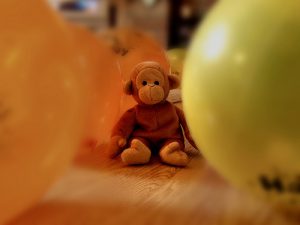 My neighbours in the Netherlands just had a baby and have proudly decorated their window with pink balloons and a garland saying: ”Hooray, a girl!”
My neighbours in the Netherlands just had a baby and have proudly decorated their window with pink balloons and a garland saying: ”Hooray, a girl!”
This would probably be shocking to a new category of Swedish parents, who refuse to reveal the sex of their baby to family and friends as well as to daycare staff. The baby is given a gender-neutral name, and will be dressed in anything but pink and light-blue.
Why? The parents don’t want their child to be subjected to society’s division of human beings into male and female, claiming that the stereotypes linked to it limit the child’s freedom.
While this remains rather rare, there is a rapidly increasing number of preschools in Sweden where gender equality is the main ideological and educational basis.
In these schools, the staff strives to treat girls and boys equally in all respects. They don’t hide the fact that both sexes exist, but don’t make a point of it and won’t encourage the children to play and behave in a way that is typical for their sex. They won’t call them girls and boys, but refer to them as ”friends” or ”children”.
Conveniently enough, a new pronoun is making its way into the Swedish language: ”hen”, meaning both ”he” and ”she” (”han” and ”hon” in Swedish). When the practice of using ”he” for both sexes in law texts was changed to the more cumbersome ”he or she”, texts became difficult to read and people started looking for other solutions.
The idea of ”hen” comes from the Finnish language (although Finnish is completely different from Swedish; its closest relative among European languages is Hungarian), which uses the pronoun ”hän” for both sexes. Apart from being used in texts to increase readability, the Swedish pronoun ”hen” is now used by advocates of gender neutrality.
The new pronoun and gender-neutral preschools are hot topics in Sweden right now. An increasing number of people like and make use of them, but a big part of the population is very critical towards them.
Sweden is one of the leading countries when it comes to gender equality. Thanks to the important work that has been done in this regard, women and men now basically have the same opportunities in all areas of life.
When gender equality turns into gender neutrality, however, are we still going in the right direction? Isn’t there a risk that gender-neutral treatment introduces another type of prejudice? When girls behave in a traditionally girly way, and boys behave in a traditionally boyish manner, will this be happily accepted or will they feel that their behaviour is wrong? Will there be a new ideal of tough girls and soft boys, as some critics fear?
How will children develop when their parents actively try to conceal what sex they are? Will they think that it’s bad to be a boy or a girl? Will they revolt against their upbringing and shower their own daughters with princess stuff, and their sons with cars and toy guns? Or will these children simply be freer and more unprejudiced than those who grow up in more traditional families, and contribute to a positive change in society?
Time will show.
What are you thoughts on this modern, Swedish approach to gender equality?
Kristina was born in Hamburg, Germany, but moved to Sweden at the age of 8 (her mother is German, her father Swedish). She studied French and linguistics and works as a translator. At the moment she lives in the Netherlands with her French husband and their two daughters, aged 17 months and 4 years. Kristina is interested in psychology and right now particularly focuses on child and family psychology. Working three days a week and being a full-time mom the remaining days, she doesn’t find as much time to read, write and practice yoga and music as she would like, but appreciates her early mornings in trains. There is nothing like contemplating an awakening landscape from a train with a cup of hot chocolate.
The image used in this post is credited to Jonathan Stonehouse. It holds a Flickr Creative Commons attribution license.
World Moms Blog is an award winning website which writes from over 30 countries on the topics of motherhood, culture, human rights and social good. Over 70 international contributors share their stories from around the globe, bonded by the common thread of motherhood and wanting a better world for their children.
World Moms Blog was listed by Forbes Woman as one of the "Best 100 Websites for Women 2012 & 2013" and also called a "must read" by the NY Times Motherlode in 2013. Our Senior Editor in India, Purnima Ramakrishnan, was awarded the BlogHer International Activist Award in 2013.
More Posts

by Martine de Luna (Philippines) | Nov 14, 2013 | 2013, Cultural Differences, Humanitarian, Humanity, Natural Disaster, Philippines, World Events, World Motherhood
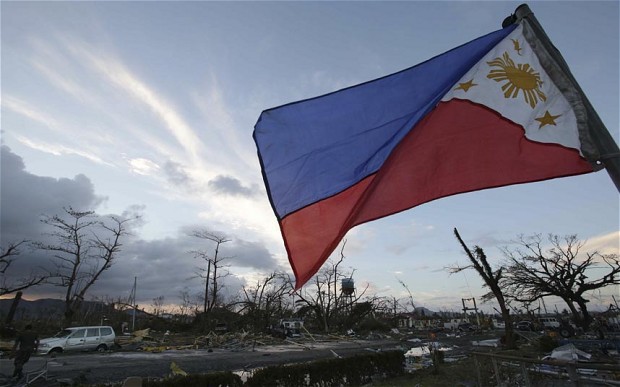 There are just no words these days to describe what has happened to my beautiful country. I write this from the capital of Manila, which was spared the catastrophic effects of the world’s strongest recorded typhoon, Haiyan, which befell our country last November 8.
There are just no words these days to describe what has happened to my beautiful country. I write this from the capital of Manila, which was spared the catastrophic effects of the world’s strongest recorded typhoon, Haiyan, which befell our country last November 8.
The most affected regions are in the Southern region, the Visayas. These islands comprise some of our top tourist destinations, and are home to some of the world’s most beautiful beach landscapes, including the famous Boracay island, Bohol, and Palawan, where we have several world heritage churches and protected coral reefs.
Today, we don’t know what will come of these cities, which have all been ravaged by nature’s cruelest storm to date.
Watching CNN is both helpful and heartbreaking. Helpful, because it keeps us attuned to what’s going on; heartbreaking, because the images they show slowly wear away at the human heart. Daily — sometimes by the hour — we receive more news about the worsening situations in the Southern Philippines.
Our country is in shock. I know it would be easy for some to blame our government, too, and not that I am a hundred percent in agreement with the way things are run, but I also believe our President and officials of the affected cities are in shock, too. The finger-pointing and guilt-tripping on social media disgusts me, to the point that I’ve sometimes stayed off for hours, just to filter out the negativism. (more…)
Martine is a work-at-home Mom and passionate blogger. A former expat kid, she has a soft spot for international efforts, like WMB. While she's not blogging, she's busy making words awesome for her clients, who avail of her marketing writing, website writing, and blog consulting services. Martine now resides in busy, sunny Manila, the Philippines, with her husband, Ton, and toddler son, Vito Sebastian. You can find her blogging at DaintyMom.com.
More Posts

by Nancy Sumari | Oct 23, 2013 | 2013, Husband, Relationships, Social Good, Social Media, Travel, United Nations, USA, World Events, World Motherhood
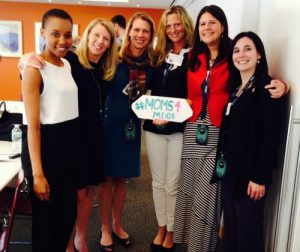 Nothing about my New York trip was what I thought it would have been. ‘Accompanying my significant other’ was the answer I gave to the lady at the visa section.
Nothing about my New York trip was what I thought it would have been. ‘Accompanying my significant other’ was the answer I gave to the lady at the visa section.
Neither she nor I had any idea what NY – “the city where dreams are made of” – had in store. Okay, maybe I am being a bit dramatic, but the vacation I thought I was to going have, was about to have a new prefix: work. It was to become a “work-cation.”
Before leaving for the Big Apple, I reached out to any available World Moms in the area on facebook, and almost instantly I had my first set of meetings with the WMB founder, Jennifer Burden. (more…)

by Jennifer Burden | Oct 18, 2013 | 2013, Education, Family, Health, Home, Human Rights, Humanitarian, Inspirational, Kids, Natural Disaster, Philanthropy, USA, World Events, World Motherhood
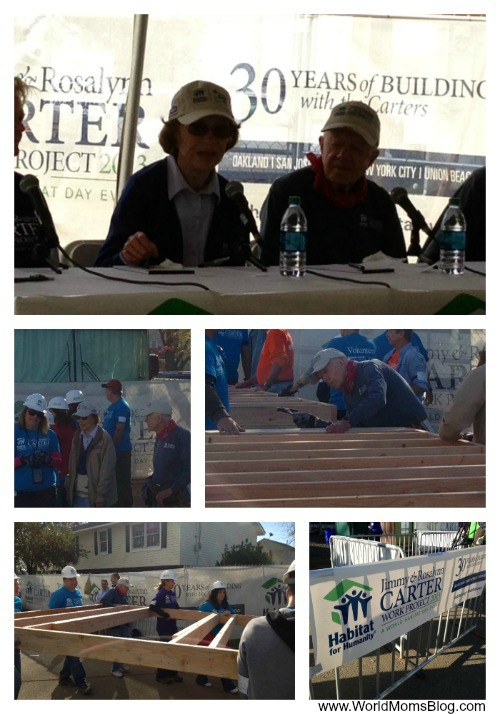
When it comes to helping people outside the United States, Former President Jimmy Carter says, “We don’t distinguish.”
In celebration of this week’s World Habitat Day, Carter said last Saturday, “We think the folks [we build housing for] in other countries are just as good and needy as the folks in America.”
The message that President Jimmy Carter and First Lady Rossalyn Carter brought to Union Beach, NJ, a town that was hit by Hurricane Sandy almost one year ago, was one of hope, for the people there and the people all around the world.
The Carters have spent over 3 decades giving a hand up to families in need of affordable shelter through Habitat for Humanity, a Christian non-profit that builds housing for the people who need it most. And, by the looks of it, they are not stopping. Last week, on the Habitat for Humanity work site in Union Beach, NJ, the President and First Lady, in their work clothes, helped build house framing for over 2 hours. (They are for real, guys.) This was the tail end of the Carter work project this year that went around the United States and ended in New Jersey.
The local branch of Habitat for Humanity in Monmouth County, New Jersey, USA, has completed 40 homes since Super Storm Sandy hit in October of last year. Eighty percent of their service area was affected by the storm from the town of Aberdeen to the town of Ocean.
First Lady Rossalyn Carter stated, “This [worksite] was a special one for us. Super storm Sandy hit, and we’ve been worried about you all ever since.”
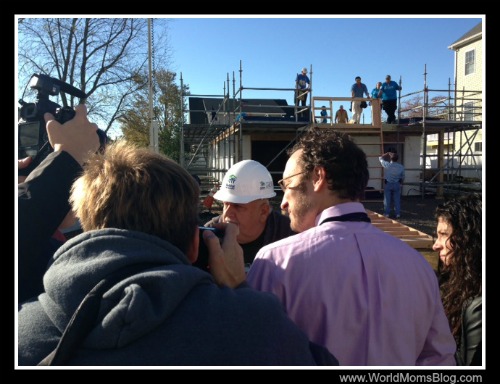
Mr. Lamberson is interviewed by the Press on the Carter’s worksite. That’s his home in the background being rebuilt after Super Storm Sandy damaged it almost one year ago.
The Carters have proved themselves tireless champions of human justice.
“We find that Habitat home owners were hopeless and have never known success. They’ve been promised outside help that never arrived, but Habitat is not that way. Local people decide what kind of houses to build, where and which families. Lots of the homeowners become transformed.” — President Carter.
The Former President also explained that the houses in Union Beach were being raised by 8 feet to withstand any future super storms. He said, “Places have to be prepared for the next natural disaster.”
The Habitat model is not a 100% hand out. Homeowners pay the full cost of the house, and they must put in at least 100 hours of work. However, in most cases, their mortgage is 0% interest.
And the organization requests their volunteers fundraise or pay to help, as well as, dedicate their woman and man hours.
Former First Lady Rossalyn Carter explained that education can be greatly effected when children do not have a home, and she referred to a family in Seattle, Washington, USA who were living in their automobile. After they moved into their Habitat home, their son became top of his class just months after moving into their Habitat home.
The Former First Lady described another mother who previously cringed to answer her door to her substandard housing because it was often the police saying that her sons were in trouble. Her sons were never home. After Habitat arrived and built them a new house, her sons returned home with their friends because they were proud of where they lived and were staying out of trouble.
These are the types of examples that keep the Carters going and using their celebrity to further the cause for adequate housing.
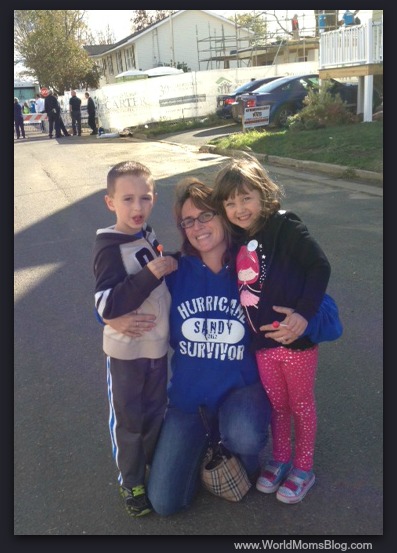
“Hurricane Sandy Survivor” — Kelly is a mom of twins whose home was flooded in Super Storm Sandy last year. Her family is still displaced and waiting for work on their home to be finished almost one year later (not a Habitat home). She came by with her kids to catch a glimpse of the Carters on Saturday.
“When we go to South Africa, South Korea, the Philippines, Europe, Hungary , and 3 times in Mexico, people are the same wherever we go.” — Former First Lady Rossalyn Carter
Exactly.
This is an original post to World Moms Blog by Founder, Jennifer Burden in NJ, USA. Jennifer is no stranger to Habitat for Humanity. As a junior at Villanova University, she spent a week building an adobe-style house in New Mexico, USA for a low-income family through the organization.

Jennifer Burden of World Moms Blog with Jennifer Sneed of Habitat for Humanity in Monmouth County, NJ at the Carter worksite in Union Beach, NJ on October 12, 2013.
Photo credits to the author.

Jennifer Burden is the Founder and CEO of World Moms Network, an award winning website on global motherhood, culture, human rights and social good. World Moms Network writes from over 30 countries, has over 70 contributors and was listed by Forbes as one of the “Best 100 Websites for Women”, named a “must read” by The New York Times, and was recommended by The Times of India.
She was also invited to Uganda to view UNICEF’s family health programs with Shot@Life and was previously named a “Global Influencer Fellow” and “Social Media Fellow” by the UN Foundation. Jennifer was invited to the White House twice, including as a nominated "Changemaker" for the State of the World Women Summit. She also participated in the One Campaign’s first AYA Summit on the topic of women and girl empowerment and organized and spoke on an international panel at the World Bank in Washington, DC on the importance of a universal education for all girls. Her writing has been featured by Baby Center, Huffington Post, ONE.org, the UN Foundation’s Shot@Life, and The Gates Foundation’s “Impatient Optimists.” She is currently a candidate in Columbia University's School of International and Public Affairs in the Executive Masters of Public Affairs program, where she hopes to further her study of global policies affecting women and girls.
Jennifer can be found on Twitter @JenniferBurden.
More Posts - Website
Follow Me:

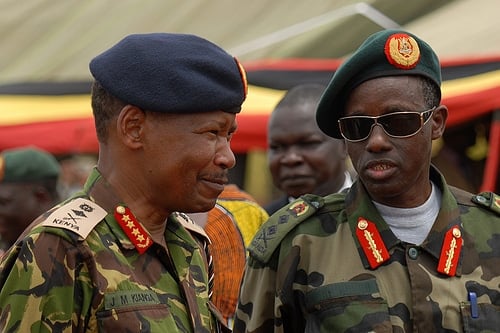
by Mama Mzungu (Kenya) | Sep 25, 2013 | Africa, Being Thankful, Family, Gun Violence, Humanity, International, Kenya, Kids, Living Abroad, Media, Motherhood, Safety, Stress, Tragedy, World Events, World Motherhood
This post is a reflection by our editor, MamaMzungu, in Kenya on the September 21, 2013 shooting in Nairobi, when 10-15 unidentified gunmen opened fire in an upscale, downtown shopping mall, killing 62 and wounding more than 175 people.
 I’ve spent the last few days fighting back (often unsuccessfully) tears. When I communicate about this tragedy to friends and family, I find myself most often saying, “there are no words.”
I’ve spent the last few days fighting back (often unsuccessfully) tears. When I communicate about this tragedy to friends and family, I find myself most often saying, “there are no words.”
Sixty dead souls, children among them, nearly 200 injured and the senseless death toll keeps mounting. Ravi Ramrattan, among them, is a friend who was kind-hearted, whip-smart and had a manner that immediately put everyone at ease. They identified him by his shoes.
Unthinkably, when I describe him, I have to use the verb “was” not “is;” his bright future snatched from him, leaving a crater-sized hole in the hearts of people who loved him. Those are words. And as I type them, here I go again fighting that tightening in my throat and welling in my eyes.
Still, I need to find words. I need to find some sense or meaning out of this tragedy.
When we first heard about the shooting, we were camping in a forest with some friends. We were walking amid astounding beauty with our children, 3 four-year-olds and 3 babies. We received information in fits and starts when cell phone reception worked.
First it was 15-20 dead. Shit. That’s gotta be a terrorist attack.
Then it was 29. Holy crap. Pit in the belly. Do we know anyone?
Then it was 39. But these numbers could keep going up. Where will it stop?.
Then, 59 dead. Silence.
But it was one small detail, not the numbers, that finally made that scene at the luxury mall real: It was a children’s day at the mall. Something I might have taken my own babies to. Some of these children were now dead.
I was going to write something about numbers, how we interpret tragedy and risk through a narrow and almost tribal lens. How I’ve seen a lot of equally senseless and avoidable death from terror of poverty. And those numbers are higher than 60.
How disappointing the truth is that it pains me to my core, when the victims look like me – when I can picture myself and my children in that circumstance.
How, as much as I think of myself as part of a truly global community, the world spins off its axis more for me when my bubble of safety and comfort is exploded.
But forget all that. I’m not in the mood to be philosophical yet. I just want to be sad. I want to mourn.
All life is precious. And fleeting. And nothing is sure. I just want to hug my family extra tight. And I want to pray to a god which I have to cling to, even though such senselessness make me doubt his existence, to bring comfort to the people who are unexpectedly burying loved ones too soon.
Mama Mzungu is a World Moms Blog editor and contributor living in Kenya with her husband and two young children. You can read more about their life and recent events on her blog: Mama Mzungu This article was reposted on World Moms Blog with permission.
The image used in this post is credited to US Army Africa and holds a Flickr Creative Commons attribution license.
Originally from Chicago, Kim has dabbled in world travel through her 20s and is finally realizing her dream of living and working in Western Kenya with her husband and two small boys, Caleb and Emmet. She writes about tension of looking at what the family left in the US and feeling like they live a relatively simple life, and then looking at their neighbors and feeling embarrassed by their riches. She writes about clumsily navigating the inevitable cultural differences and learning every day that we share more than we don’t. Come visit her at Mama Mzungu.
More Posts - Website
Follow Me:


by Sophie Walker (UK) | Sep 18, 2013 | 2013, Being Thankful, Competition, Health, Inspirational, International, Life Lesson, Sophie Walker, Sports, UK, Uncategorized, Womanhood, Women's Rights, World Events, World Motherhood
 Hurrah for Diana Nyad!
Hurrah for Diana Nyad!
In a few short weeks she has overturned long-established ideas about age and ability and strength and given us all a reason to keep swimming.
Nyad, in case you’ve been looking the other way, is the 64-year-old woman who recently became the first person to swim the 110 miles from Cuba to the U.S. without a shark cage, taking almost 53 hours.
This would be a marathon effort at any time, but when you consider that it was her fifth attempt over some forty years; that she had to wear a mask to protect her from jellyfish stings; that she took in so much sea water it caused her to vomit constantly for almost all of that 53 hours; that she arrived finally with face and lips swollen from sun and sea water – well, then her achievement, and her insistence not to be deflected from her aim, would seem to reflect almost superhuman levels of endurance.
The word endurance does not typically bring to mind 64-year-old women. In our culture, it is often used to describe young men – runners, rowers and cyclists at the peak of their profession or pushy capitalists doing extreme sports to fill that adrenaline void when Wall Street is closed.
Google “Endurance” and up come pictures of young, lean, tanned male muscle in a celebration of machismo as traditional now as images of mustachioed weight-lifters once were in Victorian times.
The same web search also shows sepia-tinged photographs of the tall-masted Victorian adventure ship christened Endurance, on which British polar explorer Ernest Shackleton set off for Antarctic expeditions in the last century. (Twenty-first century sailor Ellen MacArthur’s solo circumnavigation of the globe strangely does not feature.)
Nonetheless, I think many women, hearing Nyad’s achievement, will have given a little nod, and maybe a small smile, of understanding. Many more will never hear of her, yet understand without discussion the will that kept Nyad going.
Though they may not be sports fanatics, or travelers with a yen for the toughest destinations, many women set their own personal standards of endurance in their day-to-day existences.
Their marathon may consist of walking for hours to find water and food in conditions of extreme poverty and hunger. Their endurance training may consist of watching their children die for the lack of a cheap vaccine. Their 53-hour record may be for the time worked within a dangerous and miserably uncomfortable factory, to earn a tiny amount with which a family can just about be supported.
For the luckier ones, endurance may just mean a bleak commute, juggling the needs of employers and families and ever-mounting bills. It may mean keeping smiling when a child is in pain, it may mean getting up for the fifth time in one night to attend to small, fevered offspring while knowing that big important morning meeting is looming. It may mean getting over the disappointment when that male colleague got that promotion. It may mean an ability to keep walking with head high when the cat calls keep coming.
Endurance can mean many things. Diana Nyad has reminded us that it is not an exclusively male domain. Already crowds of cynics are assembling to cast doubt on Nyad’s achievement, wondering how an old woman could have completed that swim in that time. Clearly her next endurance test lies just ahead.
But whatever the outcome, she has broadened the parameters of what the will to keep going looks like. And that is no small feat, either.
This is an original post to World Moms Blog from our writer in the UK and mother of four, Sophie.
The image used in this post is credited to Alan Cleaver. It holds a Flickr Creative Commons attribution license.

Writer, mother, runner: Sophie works for an international news agency and has written about economics, politics, trade, war, diplomacy and finance from datelines as diverse as Paris, Washington, Hong Kong, Kabul, Baghdad and Islamabad. She now lives in London with her husband, two daughters and two step-sons.
Sophie's elder daughter Grace was diagnosed with Asperger Syndrome several years ago. Grace is a bright, artistic girl who nonetheless struggles to fit into a world she often finds hard to understand. Sophie and Grace have come across great kindness but more often been shocked by how little people know and understand about autism and by how difficult it is to get Grace the help she needs.
Sophie writes about Grace’s daily challenges, and those of the grueling training regimes she sets herself to run long-distance events in order to raise awareness and funds for Britain’s National Autistic Society so that Grace and children like her can blossom. Her book "Grace Under Pressure: Going The Distance as an Asperger's Mum" was published by Little, Brown (Piatkus) in 2012. Her blog is called Grace Under Pressure.
More Posts

 My neighbours in the Netherlands just had a baby and have proudly decorated their window with pink balloons and a garland saying: ”Hooray, a girl!”
My neighbours in the Netherlands just had a baby and have proudly decorated their window with pink balloons and a garland saying: ”Hooray, a girl!”

 There are just no words these days to describe what has happened to my beautiful country. I write this from the capital of Manila, which was spared the catastrophic effects of the world’s strongest recorded typhoon, Haiyan, which befell our country last November 8.
There are just no words these days to describe what has happened to my beautiful country. I write this from the capital of Manila, which was spared the catastrophic effects of the world’s strongest recorded typhoon, Haiyan, which befell our country last November 8. 














